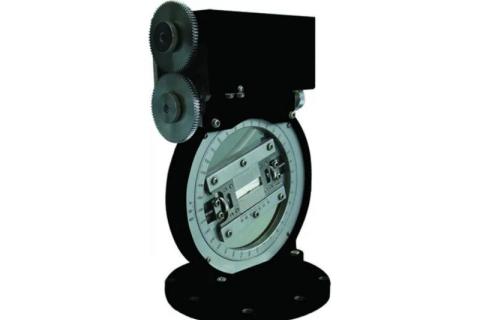
- Home
- >
News
Fiber Accessories utilize the X-ray diffraction (transmission) method to analyze the unique crystal structure of fibers. Parameters such as crystallinity and full width at half maximum (FWHM) are used to determine the orientation degree of the sample. Main Functions and Features of Fiber Accessories: Maintaining Fiber Orientation: This is the most critical aspect. Fibers typically exhibit high anisotropy, with crystals preferentially aligned along the fiber axis. Fiber Accessories can straighten and secure fiber bundles, preserving their original orientation to measure orientation degree and distribution. Adapting to Different Sample Forms: Single Fiber: Extremely thin, requiring special clamps or frames for fixation. Fiber Bundle: Multiple fibers arranged in parallel; Fiber Accessories must align and tension them uniformly. Fiber Fabric: Materials like cloth require a flat frame to stretch them taut. Enabling Special Testing Modes: Transmission Mode: Suitable for thin fiber bundles or single fibers. Fiber Accessories include a dedicated frame to tension the fiber, allowing X-rays to penetrate the sample directly. Reflection Mode: Used for thicker fiber bundles or fabrics. Fiber Accessories provide a flat sample surface for this mode. Fiber Sample Holder: This is a simple metal or plastic frame equipped with slots or knobs. During operation, both ends of the fiber bundle are fixed to the holder, and knobs are rotated to tension the fiber, keeping it straight and parallel. The entire holder can be placed in the XRD goniometer for testing, similar to a standard sample. In summary, Fiber Accessories for XRD are specialized sample fixation devices designed for testing fibrous samples with anisotropic structures. Their core function is to maintain and regulate fiber orientation, while advanced versions may support in-situ stretching and other functionalities, providing critical insights into the orientation of crystal structures in fibers.
XRD and FTIR fiber accessories provide complete material characterization solutions. XRD units analyze crystal structure and orientation, while FTIR systems identify composition through micro-imaging and ATR technology. Accessories include small-angle diffraction, parallel beam thin-film, and in-situ temperature stages for nanoscale analysis. Automated sample handling enhances efficiency. Applications span material research, industrial quality control, and scientific studies of polymer dichroism. These tools continue to evolve, driving innovations in fiber science and industrial applications.
Fiber accessories are tested for their unique crystal structure using X-ray diffraction (transmission) method. Test the orientation of the sample based on data such as fiber crystallinity and half peak width. A specialized component used for analyzing fiber materials such as textiles, polymer fibers, biological fibers, etc. It is commonly used to study the crystal structure, orientation, and molecular arrangement of fibers. Main functions of fiber accessories: 1. Fiber sample fixation: Fiber accessories are used to fix the fiber sample, ensuring its position and direction stability in the X-ray beam. 2. Fiber orientation analysis: By adjusting the position and angle of the sample, the crystal orientation and molecular arrangement of the fibers are studied. 3. Small angle X-ray scattering (SAXS): Some fiber attachments support SAXS for analyzing the nanoscale structure of fibers. Common types of fiber accessories: 1. Fiber stretching device: It can apply tension to fibers during XRD analysis to study structural changes under stress. 2. Rotating sample stage: allows fiber samples to rotate, facilitating the collection of diffraction data from different angles. 3. Temperature control accessories: used to analyze fiber materials at specific temperatures and study the effect of temperature on structure. Application fields of fiber accessories: 1. Materials Science: Study the crystal structure and mechanical properties of synthetic fibers such as nylon and polyester. 2. Biomaterials: Analyze the structure of natural fibers such as collagen and cellulose. 3. Textiles: Evaluate the orientation and crystallinity of textile fibers. Steps for using fiber accessories: 1. Sample preparation: Fix the fiber sample onto the attachment. 2. Adjust parameters: Set the X-ray source, detector, and sample positions. 3. Data collection: Collect diffraction patterns. 4. Data analysis: Use software to analyze diffraction data and obtain structural information. Matters needing attention: -Sample alignment: Ensure that the sample is accurately aligned with the X-ray beam. -Parameter optimization: Optimize X-ray energy, exposure time, etc. based on sample characteristics. -Data quality: Ensure clear diffraction patterns and avoid noise interference. Our company provides on-site training on instrument usage and related industry knowledge, as well as subsequent analysis software usage and maintenance, and complete machine maintenance services.
Fiber accessories are tested for their unique crystal structure using X-ray diffraction (transmission) method. Test the orientation of the sample based on data such as fiber texture and half peak width.
Fiber accessories are tested for their unique crystal structure using X-ray diffraction (transmission) method. Test the orientation of the sample based on the fiber crystallinity and half peak width of the fibers. This type of accessory is usually installed on a wide-angle diffractometer and is mainly used to study the texture of thin films on the substrate, perform crystal phase detection, orientation, stress testing, and other tests.
Fiber accessories are tested for their unique crystal structure using X-ray diffraction (transmission) method. Test the orientation of the sample based on data such as fiber crystallinity and half peak width. Fiber accessories have a wide range of applications in various fields, including materials science, biomedicine, chemical engineering, nanotechnology, geological exploration, environmental monitoring, and more.
The high-precision multifunctional angle measuring instrument of Tongda Technology can not only measure conventional powder samples, but also test liquid samples, colloidal samples, viscous samples, loose powders, and large solid samples.
The goniometer is the heart of the X-ray diffractometer, and the TD series X-ray diffractometer has extremely high measurement accuracy









